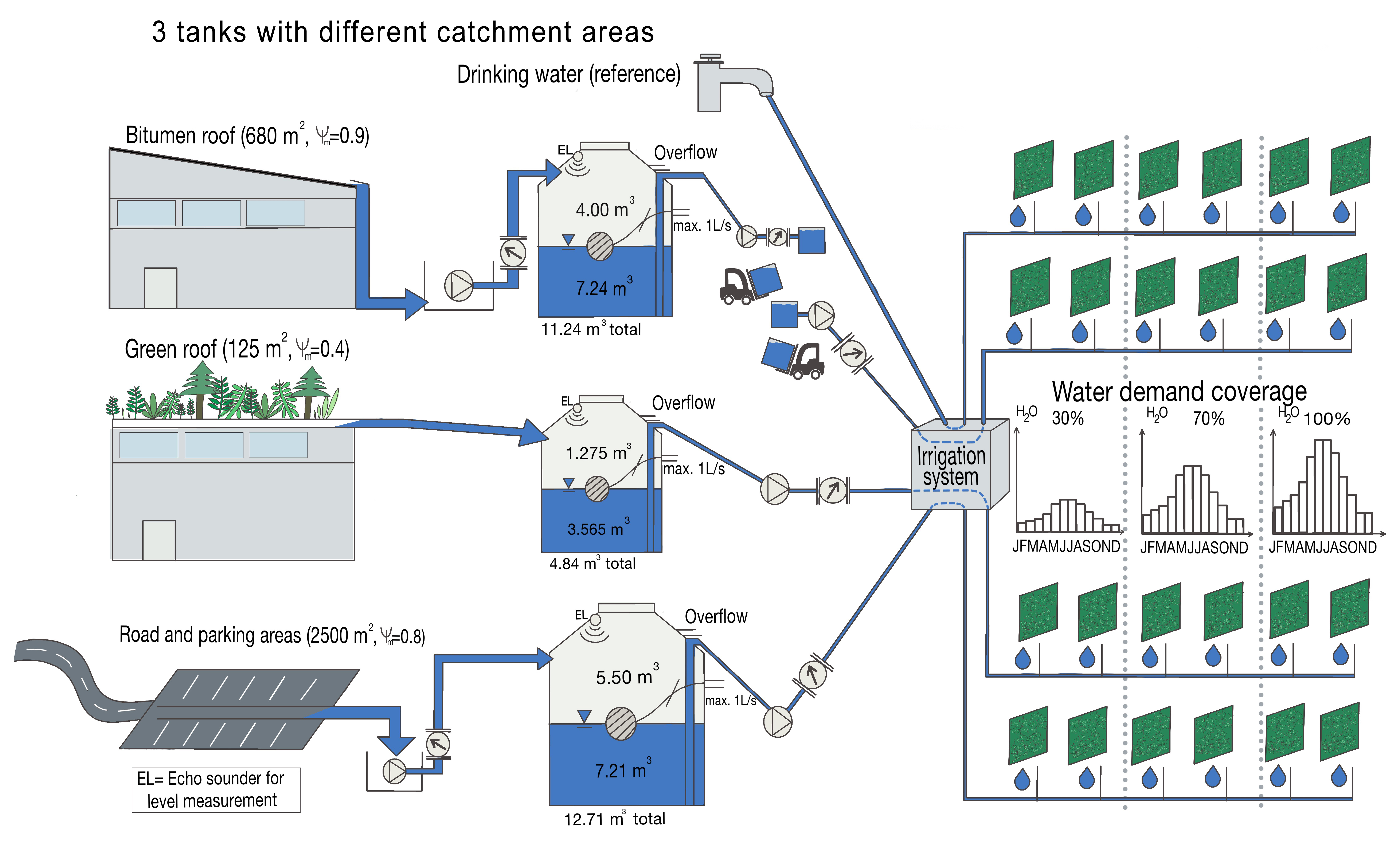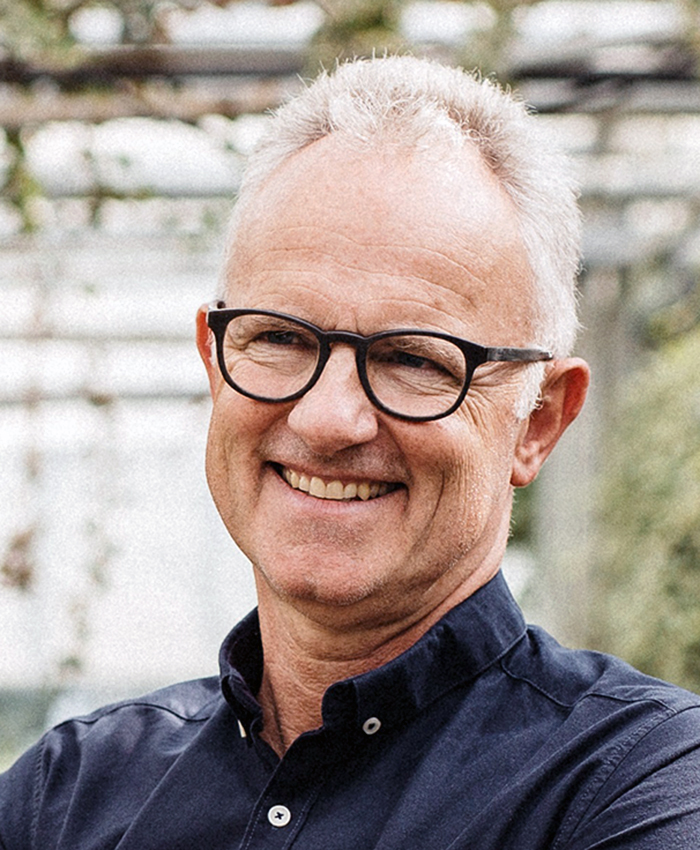Drought Prevention
Drought Prevention

Ivy facade modules irrigated with precipitation runoff from different surfaces, including the green roof shown, along with corresponding service water tank
INTRODUCTION
The AMAREX work package 3 "Functional extension of blue-green infrastructure (BGI) to prevent heat and drought" is being worked on by the Institute for Sanitary Engineering, Water Quality and Solid Waste Management at the University of Stuttgart. Blue-green infrastructure (BGI) refers to various measures for the natural handling of rainwater in settlements. Rainwater use, local infiltration, and evaporation are primarily intended to reduce or avoid high and rapid rainwater runoff. Positive effects of BGI are improved groundwater recharge and reduction of heat stress through evaporative cooling. However, the effect of BGI as a precaution against heat and drought is limited, since conventional systems are not technically designed for the larger and manageable storage volumes required for this purpose.
With the expected increase in extreme heat and drought phases as an effect of climate change, urban heat and drought prevention is a highly relevant municipal task. This work package investigates and evaluates what effect decentralized BGI can have for heat and drought prevention if they are functionally adapted and optimized as BGI-U systems - i.e. by adding manageable storage volumes for usage - to the requirements of heat and drought prevention. For this purpose, the practical planning and implementation potentials will be investigated and evaluated in pilot areas. By means of long-term studies with the green type facade greening, the hitherto missing database on climate-dependent temporal and qualitative irrigation requirements is being developed in cooperation with project partner HELIX Pflanzensysteme GmbH.
IDEAS
Firtsly, BGI-U must be clearly defined from a technical point of view. This is done by developing a catalogue of measures to describe the basic application and operational requirements of BGI-U systems. Furthermore, it will be investigated where and under which boundary conditions BGI-U can be located in urban areas and how this can lead to the decrease of water shortage situations in the environment during heat stress and drought phases. For this purpose, the potential use of BGI-U systems for local precaution against heat stress and drought is determined for an investigation area in Cologne with a geographic information system (GIS), the corresponding geodata (digital terrain model, cadastral and area information, green types) and climate data (precipitation, temperature) identified in particular through the provision of process water for the irrigation of urban green spaces.
An existing water intake-storage-provision (WSP) model is to be further developed using results from the comparative model simulations from WP 2 and supplemented by a module for the treatment effect of BGI-U systems to form a WTSP model. This model, furthermore, needs to be ultimately validated in order to be able to more precisely calculate the effect of BGI-U systems with regard to their storage, treatment and supply capacity of process water to prevent heat stress and drought.
By means of long-term investigations on the evaporation rate and plant growth of the green type facade greening, a detailed database on climate-dependent temporal and qualitative irrigation requirements is being developed in cooperation with the project partner HELIX Pflanzensysteme GmbH. Gaps in the data for other green types are being closed in cooperation with the project partner StEB Cologne, the Office for Landscape Maintenance and Green Spaces of the City of Cologne, and the Horticultural/Green Spaces Offices in Frankfurt and Karlsruhe.
A very characteristic integral approach in AMAREX is the common transfer of results of work package 3 with the results of work packages 2 and 4 into a web tool. Thus, subsequent to the project, municipalities and authorities will have an effective tool to assess the potential of BGI-U systems for the precaution against heat stress and drought as well as for the prevention of flooding for their own study areas.
IMPLEMENTATION
The collection-storage-provision model (ESB model) for stormwater runoff was applied to 2 pilot areas in Cologne (infiltration/evaporation compensation of a city lake and irrigation of urban greenery). The profiles for RWB-N and RWB+ systems are now being converted into a catalog of measures using ESB model and SWMM modeling. The test facility for the irrigation of greening elements with various surface runoffs is in its second vegetation period and the data evaluation for 2023 is underway.

EXPERIMENTAL ARRANGEMENT OF THE LONG-TERM STUDY WITH RETENTION CISTERNS AND GREENING ELEMENTS © EDUARD ROTT, HANNAH VOGEL



